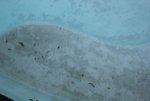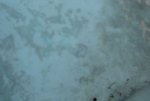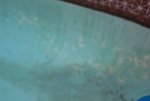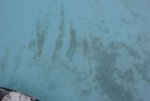Plaster is composed of calcium silicates and calcium carbonate. The calcium carbonate will dissolve in water that is not saturated with calcium carbonate and it dissolves more quickly with less saturation and lower pH.
PoolMath can be used to calculate the Calcite Saturation Index (CSI) and if I plug your numbers into the program it calculates a CSI of -0.86 if I use your first CH number of 120 ppm and -0.67 if I use your second number of 200 ppm. I assumed a water temperature of 85ºF in both cases (a lower water temperature would have an even more negative CSI).
Why did the CH vary so much? Was that with two different test results?
Regardless, the CSI is quite negative and over a longer period of time would degrade plaster. Given the lower pH and the higher CYA level, it sounds like you may be using Trichlor tabs as your source of chlorine. These are very acidic so tend to lower the TA over time and can have the pH be low. When using Trichlor, one would generally have the TA higher, usually in the 100-120 ppm range, but sometimes higher. Also, the CH should generally be higher in plaster pools. Trichlor tabs also increase the CYA level over time making the chlorine less effective unless the FC is proportionally raised. Though the plaster has a mottled appearance, does it feel smooth or does it feel rough? How old is the plaster (even plaster taken care of with proper water chemistry does degrade over time, though can last longer, usually at least 15 and usually 20 or so years or more depending on how much one values the appearance vs. the feel of the plaster).
The blacks spots in your photo look like they might be black algae which can grow when the active chlorine level is low for an extended period of time. I suspect your chlorine level isn't always kept at 8 ppm FC and perhaps it's higher now with the sun lower in the sky but you're using the same number of Trichlor tabs as during peak summer. So if the black spots are algae, then the CYA does have to do with how the plaster looks though technically the spots aren't plaster themselves.
If your pool service is maintaining your water chemistry -- if they are in charge with testing pH, TA, CH, and CYA as well as FC levels and maintaining proper water balance -- then they haven't been doing a good job. They should have maintained the CH higher as well as the TA which would have likely kept the pH higher. Pool services often use Trichlor tabs because they usually only visit a pool once a week, but this has the CYA climb and algae can then grow unless they use supplemental products (algaecides or phosphate removers) to prevent that.
 Welcome to TFP!!!
Welcome to TFP!!!




